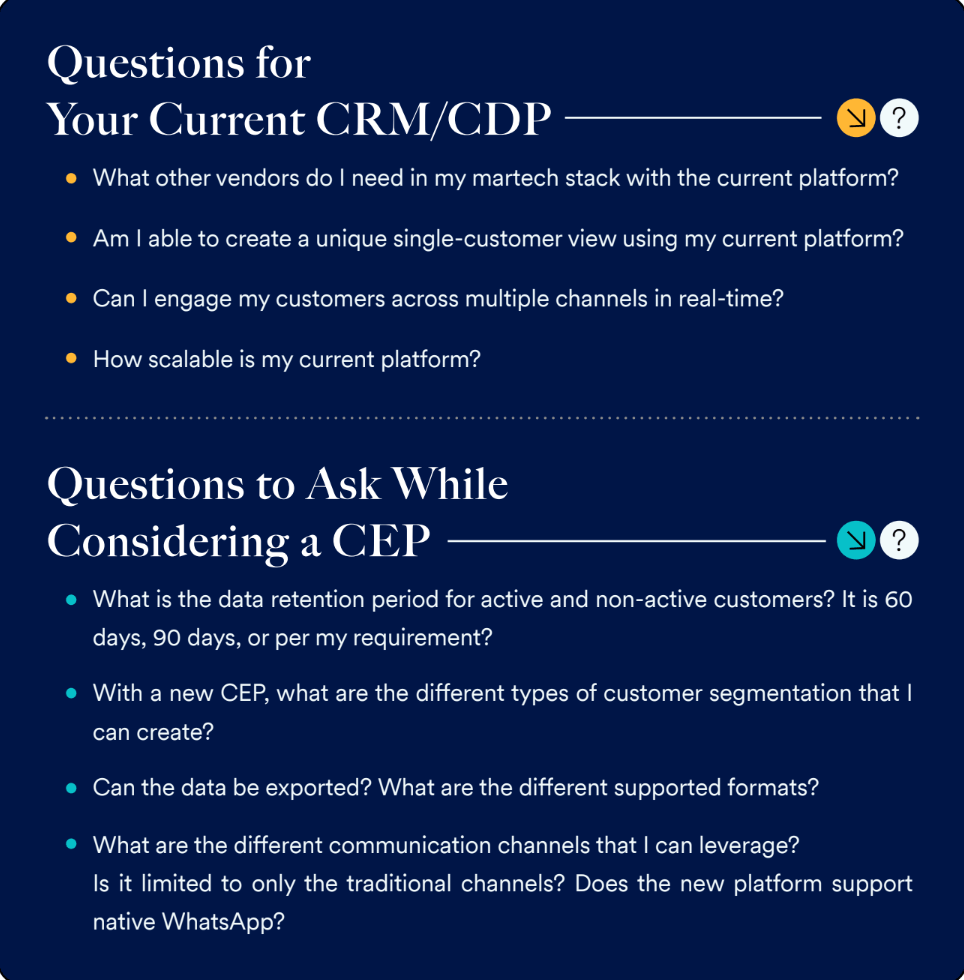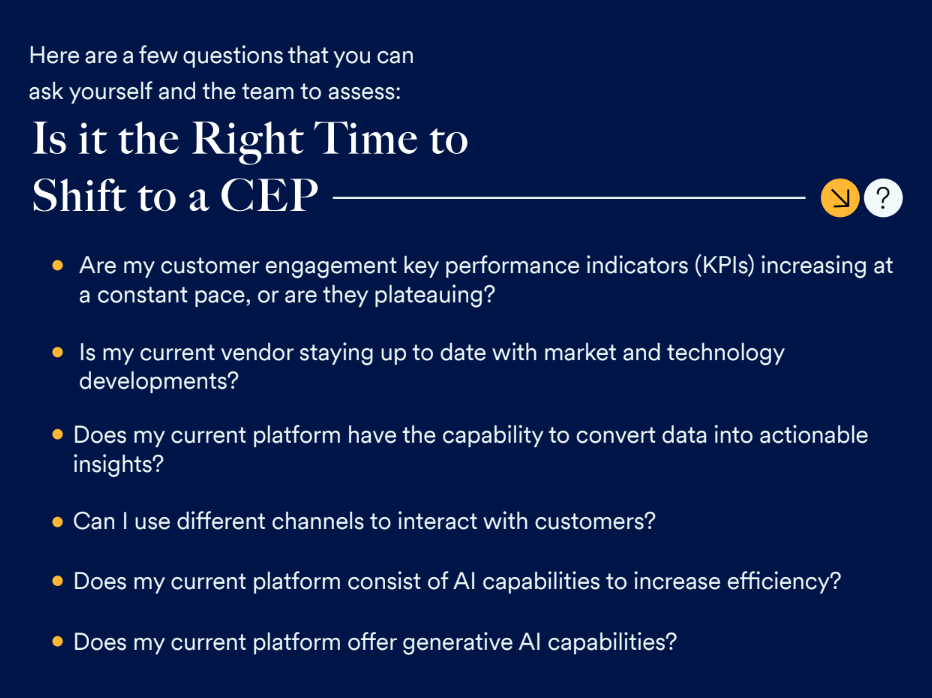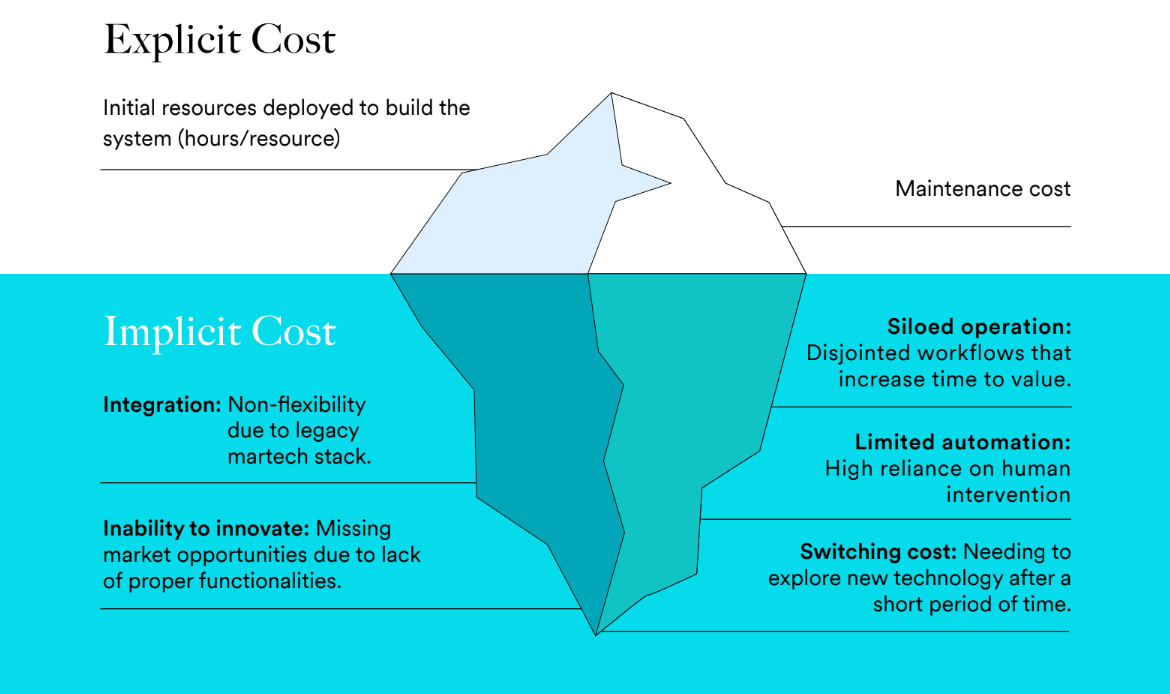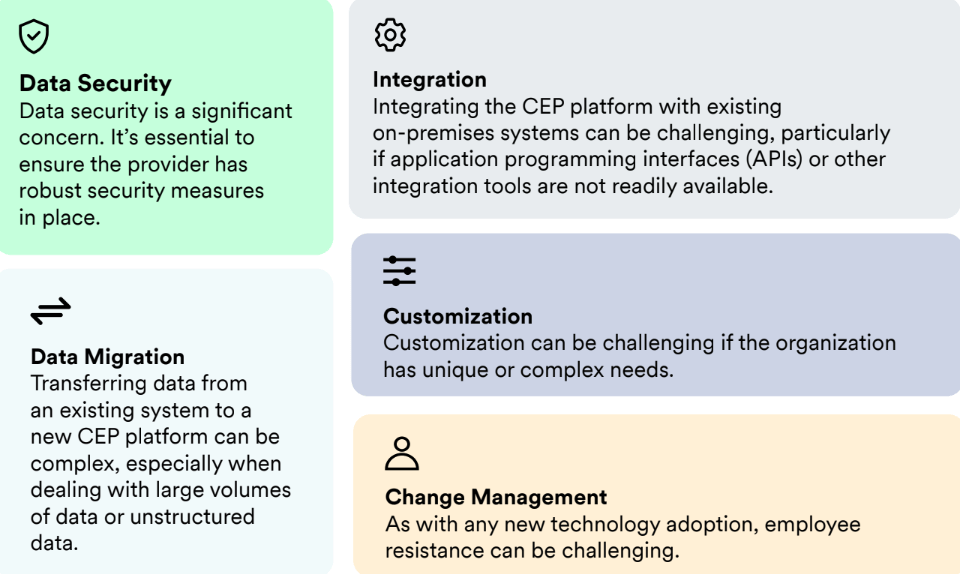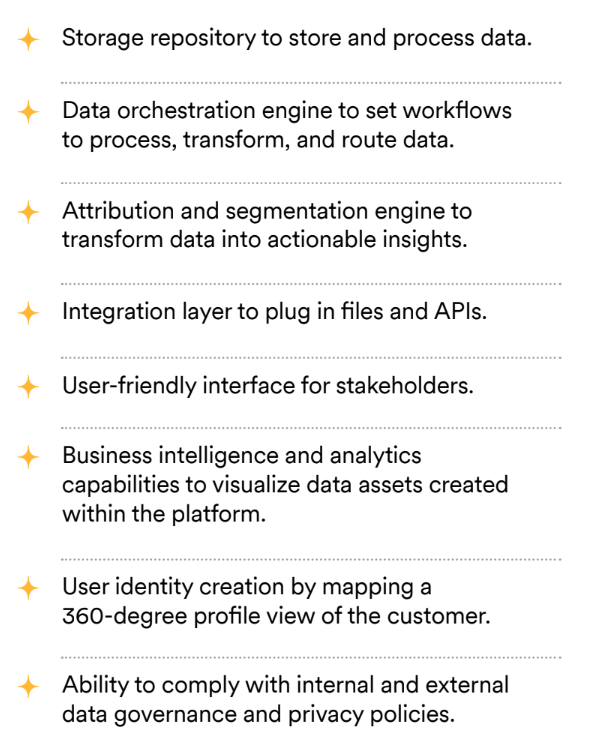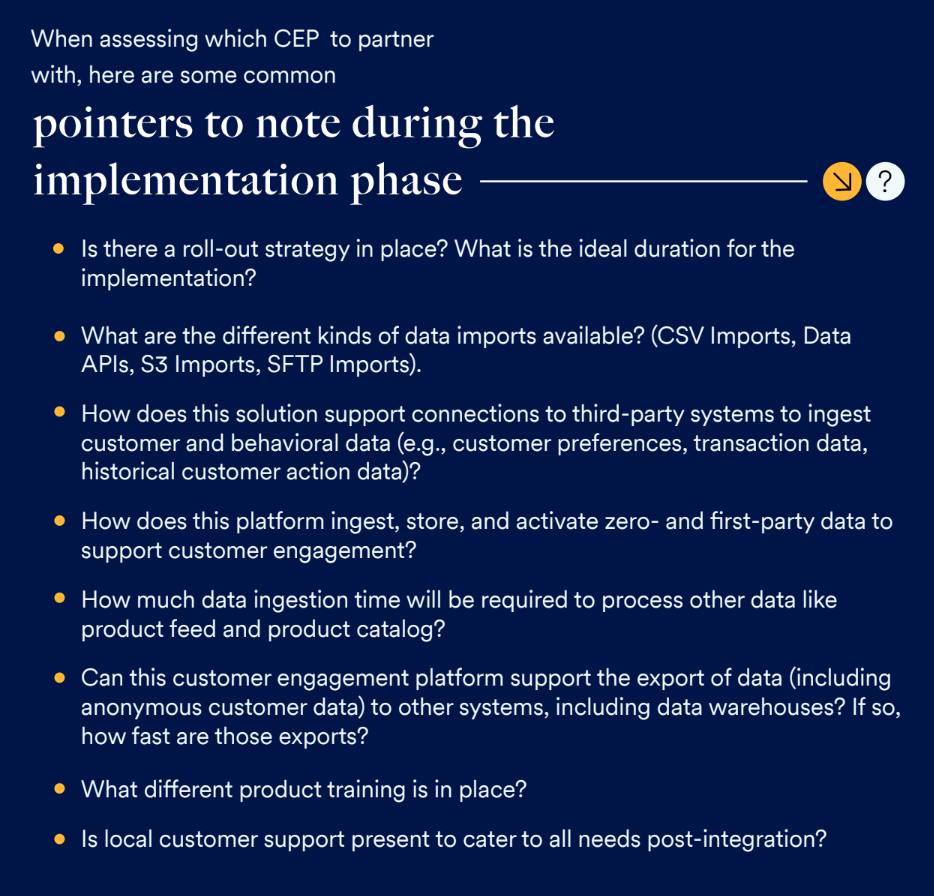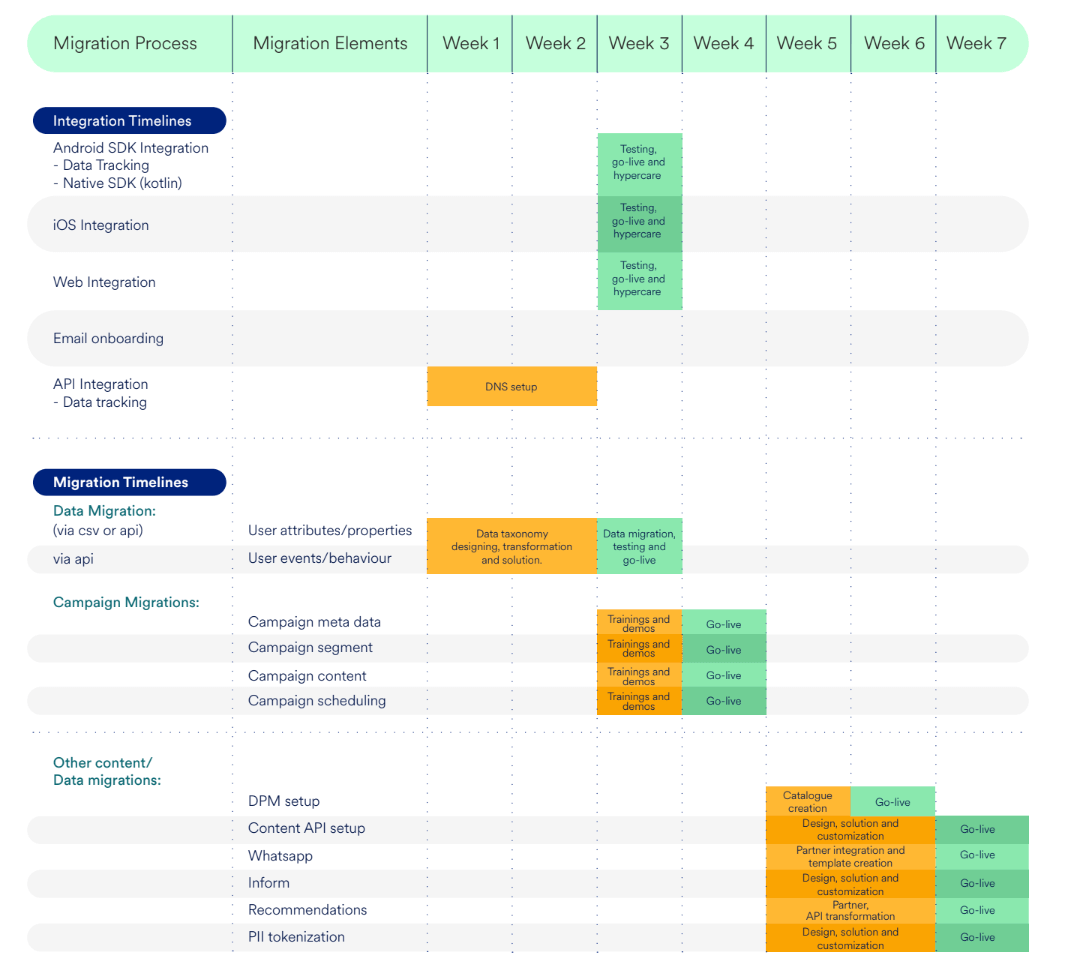Buyer’s Guide To Customer Engagement Platform (Enterprise Edition)


6 Checkpoints to Clear Before Choosing a Successful Customer Engagement Platform
In the past, we have also used CRM and CEP. However, scalability and support have always been an issue. While we did witness some growth, we wanted to breach the highest point and grow even further. This is where we think MoEngage has helped us.


Build vs Buy - The Immortal Connundrum
The buy vs. build conundrum remains an issue whenever you plan to add to or upgrade your martech stack, which in this case is a CEP. While it must be judged on a case-to-case basis, building something as complex and intricate as a CEP will definitely require time, resources, and, most importantly, money. When building an internal platform, there is always a chance of a potential surprise down the road. So, it’s important to look beyond the surface, or explicit, cost and consider a few implicit costs that could be encountered during or after the building phase.
While choosing an Engagement Platform, Explore
Ensure that the platform has the ability to structure, enrich and seamlessly integrate data from offline sources.
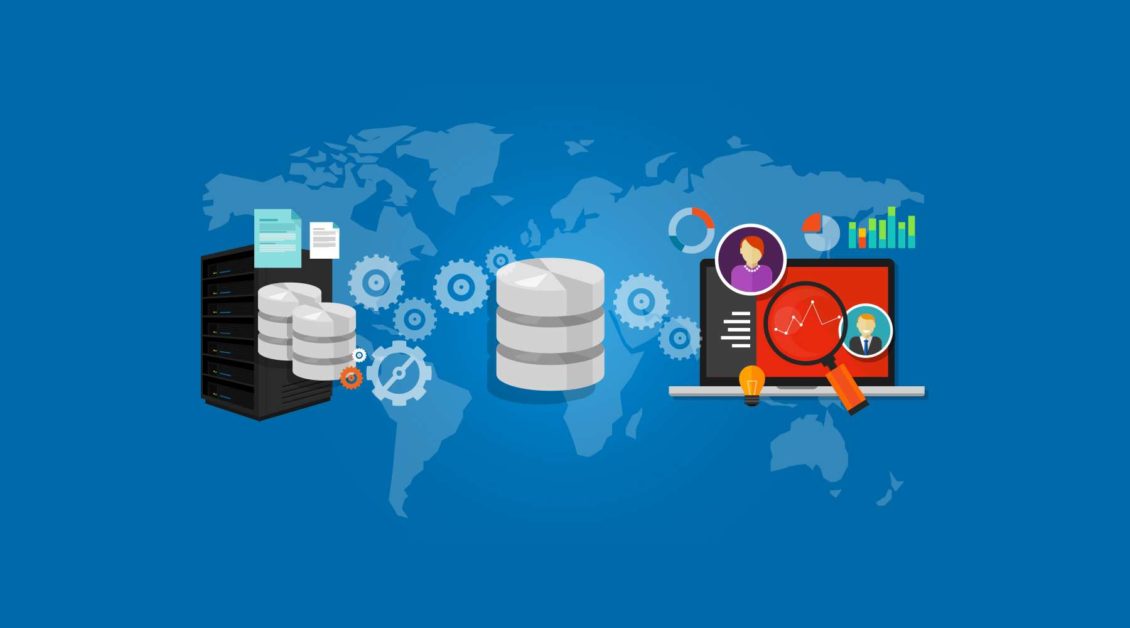
We found our ideal CEP in MoEngage. Considering our scale of operations, our integration experience has been extremely smooth. Since the beginning, the local team has been diligent and supportive, always helping us with quick resolutions to all our queries. With our partnership, we have seen a 78% increase in MAUs [monthly active users] and an incredible 303% increase in new customers on the app.

MoEngage’s Roll-Out Strategy For Any Enterprises
Frequently asked questions
What is a customer engagement platform?
A Customer Engagement Platform is a single portal that centralizes, optimizes, tracks and analyzes every customer interaction across several touch points throughout the customer journey, helping brands provide a personalized and delightful experience. It handles customer communications, behavior/pattern tracking, analyzing data, personalizing/testing campaigns, and ensuring optimum customer engagement. This solution also aids in streamlining account-based revenue teams by improving efficiency across acquisition, retention, up and cross sell.
Why do I need a customer engagement platform?
By streamlining workflows, improving collaboration and automating repetitive tasks, a Customer Engagement Platform allows your customer service teams to focus on strategies that drive long term growth. In the absence of a Customer Engagement Platform, your teams end up spending a great deal of time and effort on optimizing engagement activities. By simply integrating an engagement platform, you can improve your team’s efficiency to make data-backed decisions and boost engagement metrics multi-fold. You can drive efficient revenue growth, deliver seamless customer experience, improve loyalty, increase subscribers, arrest churn, shorten purchase cycles, improve cross/up-sell opportunities, and carve unique brand recognition.
How do I know I need a customer engagement platform right now?
While weighing the pros and cons of integrating a customer engagement platform, don’t forget to factor in the revenue loss from missed sales opportunities, burden of manual data entry and workflows, breakdown of inter-team collaboration and inability to provide personalized and targeted experience to each customer. If any of the following seem familiar, its high time you implement a customer engagement platform:
* Inefficient and unproductive business processes
* Lack of team collaboration and accountability
* Lack of data and insights
* Untapped selling potential and opportunities
* Questionable customer satisfaction
* Scope of scalability
What should an intelligent customer engagement platform have?
Here are basic functions that every intelligent customer engagement platform should possess:
* Storage repository to store and process data.
* Data orchestration engine to set workflows to process, transform and route data.
* Attribution and segmentation engine to transform data into actionable insights.
* Integration layer to plug in files and APIs.
* User friendly interface for stakeholders.
* BI and analytics capabilities to visualize data assets created within the platform.
* User identity creation by mapping a 360-degree profile view of the customer.
* Ability to comply with internal and external data governance and privacy policies.
What should I look for while purchasing a customer engagement platform?
Here are a couple of questions you need to ask before or while investing in an engagement platform:
* What is the data integration ability of the platform?
* What does the platform offer in terms of meeting your business use cases?
* What about the deployment timeline offered by the service provider?
* What are the data security features provided by the customer engagement platform?
* What is the scope of user journey orchestration provided by the platform?
* How capable is the platform in generating custom reports?
* What is the scope and scale of customer support provided?
* What does the partnership ecosystem look like?
* How easy is it to integrate the platform with your existing martech stack?
* What about the training routine offered by the service provider?
You will get a complete detailed list of 20 such questions along with core capabilities to look for in an engagement platform in the buyer’s guide.
Have the choosing parameters/questions been utilized by these experts while choosing an engagement platform?
The questions covered in the buyer’s guide have been utilized by marketing leaders and experts at top brands like AirAsia, Syarah, ONE Championship, and PayMaya to name a few. Insights have also been drawn from GTech Digital, Zee5, Myntra, BigBasket, Kredivo, Mapemall, Tokopedia and other renowned customer-obsessed brands.
Are the insights and strategies in the guide geography or vertical specific?
The valuable insights and expert suggestions have been pulled from discussions with marketing leaders of customer-focused brands from various geographies spanning several verticals, thus making them geography/vertical agnostic.
Should I go for a best-of-breed solution or an integrated platform?
The fundamental difference between a point and integrated solution is flexibility and scalability. Point solutions aim to resolve a single functional gap specific to a channel by using best of breed features. An integrated platform, on the other hand, solves multiple use cases and can be rolled out across different business functions.
The problem with implementing a point solution for your omnichannel engagement is that you might end up creating organizational silos with limited access to customer profiles and channel wide processes. In today’s ecosystem where both customers and brands prioritize a unified and connected experience across all channels, a siloed approach offered by point solutions is a bad idea.
Is implementation of a new platform going to be a challenge?
Implementing any new tool can be a task in itself. For a customer engagement platform, once the core capabilities are identified, it’s important to look at the implementation plan that will be put in place.
Below are a few points to look at for implementation:
- Is there a roll-out strategy in place? What is the ideal duration for the
implementation? - What are the different kinds of data imports available? (CSV Imports, Data
APIs, S3 Imports, SFTP Imports). - How does this platform ingest, store, and activate zero- and first-party data to
support customer engagement? - How much data ingestion time will be required to process other data like
product feed and product catalog? - Can this customer engagement platform support the export of data (including
anonymous customer data) to other systems, including data warehouses? If so,
how fast are those exports? - What different product training is in place?
- Is local customer support present to cater to all needs post-integration?
- How does this solution support connections to third-party systems to ingest
customer and behavioral data (e.g., customer preferences, transaction data,
historical customer action data)?
How do I decide whether to buy an engagement platform or build one in-house?
This decision should be made after considering factors like cost of ownership, pace of release cycles and support offered, among others. The ‘build option’ has a lower upfront cost but the total cost of ownership will be high in the long run with developer costs, integration and infrastructure overheads while the ‘buy option’ will cost you significantly lower owing to the fixed licensing structure. The ‘build option’ also provides slow release cycles with in-house dependencies, whereas the ‘buy option’ provides accelerated time-to-market because of the ready-to-deploy platform. Third party solutions also come with expert IT/marketing support along with other service parameters. You’ll get a detailed explanation inside the guide.
How important is it to build a customer first approach before investing in a customer engagement platform?
Many companies have discovered that creating and maintaining a successful business depends, first and foremost, on developing a customer-centric culture, even before integrating a customer engagement platform. Leaders and employees need to understand the brand promise and should be committed to delivering an exceptional CX. Commitment to the customer should be woven into the fabric of the organization, as it plays a critical role in aligning functions, enabling agility and spurring innovation.
